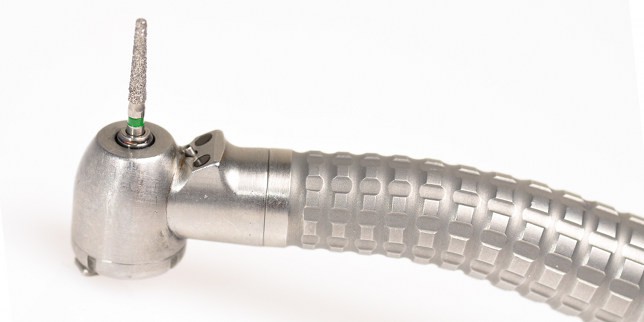We offen use the dental equipment to do the dental practice. But do you pay attention to their cleanliness? You should know it is very important. Today we talk how to keep the cleanliness of dental handpiece.
Dental handpiece having means for opening and closing a chuck. A device for opening and closing a chuck for a dental handpieces has a handle portion and a powerhead assembly including a hollow driving shaft having, adjacent to its outer orifice, a forwardly outwardly tapering portion defining a small diameter rear portion and a large diameter front portion. A chuck pusher is held in a socket member with a disc plate spring interposed between the socket member and the chuck pusher, and the pusher is movable for axially displacing the chuck to hold or release the dental tool.
Wipe down the handpiece with a damp disposable cloth. If there is still some bioburden left on the handpiece, clean under running water using a brush. A mild detergent is acceptable. Be sure that all bioburden is removed before proceeding to the next step as it can act as a protective sheild for microorganisms in the dental autoclave.
Using a pen droplet oiler (Pen Oil), insert 2-3 drops of oil into the drive air tube. Insert a drop of oil into the chuck and speed ring (if available) of the handpiece. Because there are many different types of motors in the industry, this image (left) guides you to how much lubrication to apply and to what parts of the dental micro motor. Approximately once a month or whenever you see a lot of debris build up; be sure to clean the handpiece threads with a paper towel and isopropyl alcohol. Wipe down the exterior of the handpiece with a dry towel to remove any expelled fluid or debris. The handpiece should be completely dry at this point.
Unused handpieces and handpieces which had been exposed to clinical dental procedures were contaminated with Streptococcus mutans, exposed to steam or ethylene oxide, and flushed with sterile saline. Washings were plated on mitis-salivarius agar, and colonies identified and counted. This data suggests that a substance entrapped within ‘clinical’ handpieces (possibly the biofilm) may protect bacteria from ethylene oxide gas, preventing adequate sterilization.
One used dental handpiece from each hospital or department of stomatology in general hospital selected was detected for possible contamination of bacteria by aerobic bacterial count and CONCLUSIONS: dental handpieces without anti-suction should be replaced soon by those with it or comprehensive dental unit with anti-suction device should be used. Used dental handpieces must be sterilized effectively before next use. Awareness on prevention from cross-infection should be improved for dental-care professional staff and operation of sterilization should be standardized.

